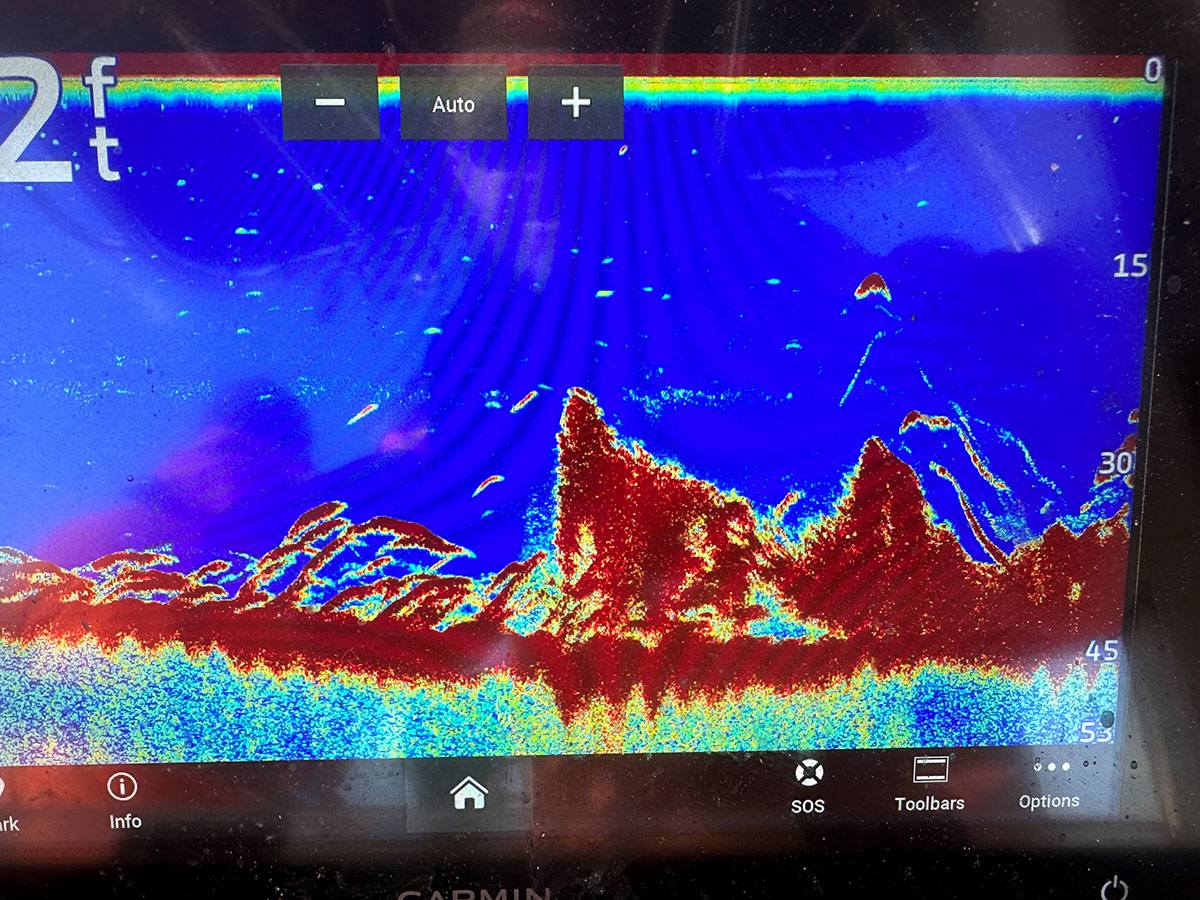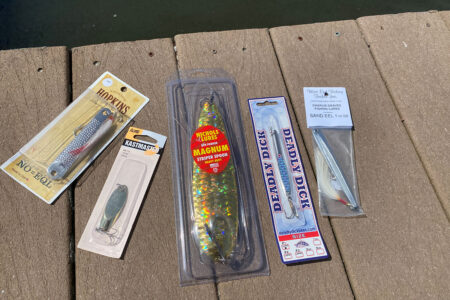
Using your sounder (depthfinder) will result in more fish caught.
An essential step in advancing from a novice captain to that of expert status is undoubtedly learning how to use the depthfinder in order to find fish. It is pivotal that fishermen understand what they are observing on the screen and how that can have a direct impact on fishing.
I recently had a conversation about this very topic with expert Captain Tyler Hartensteiner of Tyin’ Knots Charters out of Brigantine, New Jersey. He makes his living on the inshore and offshore grounds where digesting depthfinder information properly directly leads to excellent catches for his clients.
“All my days start with looking for bait whether I am live bait fishing or trolling,” Hartensteiner said. “When you find the bait, the fish typically won’t be far. Every day, week or year is different though, and sometimes bait will hold on an inshore spot all summer and fish will follow,” he continued. “But sometimes the bait is there and there aren’t any (target species) fish.” This affect can happen with any quarry.
It’s common for striped bass to feed a short distance away from the massive bunker pods that can be seen on the surface or paving the sounder below. That short distance could be a couple hundred yards up to a couple miles. Anglers that don’t catch bass within the bait balls can motor away from the bait blobs in pursuit of reading the actual fish that show up as defined arches or colored marks. “Bunker marks show up with a much ‘harder’ return than some forage since they have a larger profile/air bladder,” Hartensteiner said. “You can actually see the bass breaking up the bunker schools on the fishfinder.”
Tuna fishermen take great interest in finding life. Whales, tuna chicks, frigate birds, and of course, forage all tell offshore anglers when to jig, cast, chunk, live line or troll. Canyon captains know the importance of squid marks and they recognize them as an important ingredient for a good day.
“When offshore, squid marks are often seen just above the thermocline and individual marks show as a much smaller profile,” Hartensteiner said. “We look for ‘clouds’ of squid where the marks are clustered together. Often during the daylight hours, you mark the squid deep.”
Indeed, the larger the clouds, the better the chance at drawing, then holding, schools of marauding tuna. Hartensteiner said that when the squid really cover entire water column, the depthfinder looks “fuzzy.” Moreover, tuna can sometimes be seen above, below or within the squid concentrations under the boat. Marking the actual fish is of higher value than marking the bait. The chosen method of fishing needs to be deployed immediately when tuna marks display themselves.
Sand eels represent another huge forage base for most of the Northeast’s fishing scene. Everything from stripers to fluke to tuna pile on the sand eels when they arrive in large schools. “Sand eels are typically less dense than bunker or squid according to the Tyin’ Knots skipper. Furthermore, they can appear as groups of dots on the bottom machine due to their small size. When anglers fish sand eel masses for linesiders, lures with a slender profile are often the best bet. Thin metals and sand-eel-style umbrella rigs on the troll will capture gorging bass. In addition, Berkley Gulp Jerk Shads catch well as a teaser above a tin or fished solo on a jighead. On the tuna scene, anglers have the opportunity to use their best slow pitch prowess or troll Sterling Wide Trackers and bars that spotlight machines.
Understanding the sounder when bottom fishing is also essential. First, a fisherman has to mark the wreck or rubble that they are seeking. Likewise, if an angler is fishing hard, rock bottom or outcroppings, they can identify where the sand changes to rock. The resolution is dark and solid compared to that of less dense feedback indicating sand. Captain Hartensteiner uses his machine to its maximum when drifting or anchoring for benthic species. “When sea bass fishing, you will read fish up on top of the structure especially once you start to put them on the feed,” he said. “Sea bass, when thick, will cluster above and on the sides of structure. Anglers shouldn’t ignore a layer of sea bass along the bottom also. “On the flip, however, fluke and blackfish will most likely not read when fishing on a wreck,” Hartensteiner said.
Captains that use their sounder as an integral tool will catch better than those that don’t incorporate what’s being displayed across the screen.



